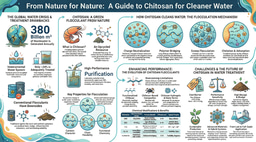India’s biogeochemical capacity to attain food security and remediate climate
Published in Earth & Environment

This study examines India's agrogeological resources in order to offer nutritious food while also mitigating climate change. Because of a lack of key minerals, many soils have low agricultural yields. Rock powder weathering benefits Indian soil productivity by helping to fertilise soils, lower atmospheric carbon dioxide levels, and halt acidification of the Indian Ocean. The nutrient density of food is also increased, which improves health while minimising the demand for and cost of medical treatment. Basic and ultrabasic rock dusts combined with biochar are extensively accessible at Indian mining sites to improve soil and plant nutrition.
In order to supply wholesome food and slow down climate change, this paper covers India’s agrogeological resources. The soils are the result of the weathering of rocks with ages ranging from more than a billion years to the most recent Holocene. Because they are severely deficient in vital minerals, many soils have low agricultural production. In addition to helping to fertilise soils, reduce atmospheric carbon dioxide levels, and stop the acidification of the Indian Ocean, rock powder weathering and biochar have significant positive effects on the productivity of Indian soils. The nutrient density of food is also increased which improves health and lowers the demand for and cost of medical treatment. Remineralization may help to solve Indian soil issues including soil infertility and texture. To improve soil and plant nutrition, dusts of carbonate, basic, and ultrabasic rocks are readily available at mining sites in India combined with biochar. Adding different grain sizes to the soil helps improve the texture of the soil. Silicate and carbonate rock powders enhance soil structure by promoting the creation of soil organic matter and fostering the growth of advantageous microbial communities. These processes offer a low-cost method of remineralizing soils with important macro- and micronutrients. For each significant soil/crop/climate system, an optimized application of India’s rock powder resources must be determined through a national research and development programme. India’s capacity to adapt to the mounting challenges of population expansion and climate change would be significantly improved by the findings of this study programme.
Follow the Topic
-
Environmental Geochemistry and Health

This journal publishes original research papers and review papers across the broad field of environmental geochemistry. It aims to establish and explain links between the natural or disturbed chemical composition of the earth’s surface and the health of the ecosystem, animals and people.
Related Collections
With Collections, you can get published faster and increase your visibility.
Harnessing Nano-Geo Interfaces: Advancing Geochemical Processes and Mitigating Anthropogenic Contaminants in Ecosystems
This special collection aims to explore the integration of engineered nanomaterials with geochemical processes to address the growing environmental challenges posed by anthropogenic contaminants. It will cover a broad range of topics, including but not limited to:
• Mechanistic Studies: Research on how engineered nanomaterials interact with pollutants like toxic trace metals, pharmaceuticals, microplastics, and other contaminants in complex environmental matrices.
• Functionalized Nanomaterials: Contributions exploring the design and application of functionalized nanomaterials for targeted pollutant capture, transformation, and immobilization in contaminated environment.
• Biogeochemical Interactions: Studies examining the role of nanomaterials in enhancing biogeochemical processes, such as natural attenuation, nutrient cycling, and soil and water quality improvement.
• In Situ Monitoring Techniques: Research on emerging methodologies for real-time monitoring of contaminant transformation, nanoparticle interactions, and the efficacy of nano-enabled remediation technologies across diverse environmental matrices.
• Case Studies and Applications: Practical examples showcasing the successful application of nano-geochemical interfaces in different ecosystems, demonstrating their potential for effective pollution mitigation and enhancing environmental health.
By covering these themes, this special collection will provide a comprehensive overview of the latest advancements in nano-geochemical interfaces, facilitating knowledge exchange and collaboration among researchers and contributing to the development of sustainable solutions for global environmental challenges.
Publishing Model: Hybrid
Deadline: Dec 31, 2025
Interdisciplinary Seawater Monitoring in Multi-Stressor Marine Environments: Implications for Environmental and Human Health
Marine environments are increasingly affected by a combination of natural and anthropogenic stressors, leading to changes in seawater quality that can have direct and indirect impacts on both environmental and human health. Contaminants such as bioaccumulative toxins, marine litter, and emerging chemical pollutants can enter marine food webs, affect biodiversity, and ultimately pose risks to human populations dependent on marine resources.
This Special Issue aims to provide new insights into the complex pathways through which multi-stressor marine environments influence environmental and human health, contributing to a more holistic understanding needed for effective management and policy actions. It will gather research that investigates the interactions between multiple stressors in marine environments and their consequences for ecosystem and human health. It will include contributions on climate related parameters, bio-essential and toxic elements, litter, organic pollutants, biodiversity, radioactivity, frugal monitoring technologies, and citizen science approaches to environmental health surveillance. Emphasis will be placed on interdisciplinary studies that link marine environmental quality indicators to potential health outcomes, risk assessment, stakeholder engagement, and policy recommendations.
Publishing Model: Hybrid
Deadline: Mar 31, 2026



Please sign in or register for FREE
If you are a registered user on Research Communities by Springer Nature, please sign in